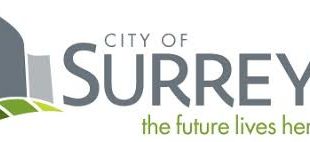With its recent acquisition of Bright, a start-up aimed at matching job hunters with employers, business networking site LinkedIn is focusing more than ever before on the recruitment process.
LinkedIn has become an extremely useful tool for job seekers – in fact, a recent survey in the US from workforce outplacement company Right Management revealed that 94 percent saw it as the most useful social media site for job hunting. Meanwhile, more than half of employers say they use social media sites to post jobs, and three-quarters to look for candidates.
So what is the best way to take advantage of the job-hunting facilities LinkedIn offers?
The first, and most important thing to do is to make sure that your profile is up to date and as informative as possible – LinkedIn can only suggest jobs for you if it has a good idea of what you’ve done already. Equally, you want potential employers that look you up to see a professional and comprehensive profile. It’s easy, as the profile page is constructed to mimic a CV format – just make sure you use all the keywords a potential employer might use for a search.
The next step for job hunters is to use the site’s Job Search options to search for positions by keyword and location. But be warned: as with every jobs website, there’s a smattering of scam postings.
At this point, you can just sit back and wait for LinkedIn to match you up with vacancies. However, this is to miss the best opportunities. On the contrary, success almost always comes down to the candidate making a personal connection with a person or persons on the hiring side. The technology, now so integral to the job search, is just a tool, not by itself a solution.
The next step, therefore, is to start making those connections. Like Facebook, LinkedIn can trawl through your address book and make suggestions. Once you’re connected, a button allows you to publicly endorse people for various skills: and, with a bit of luck, those you endorse may very well endorse you back.
It’s best to avoid connecting with personal friends, unless of course they are colleagues too – Facebook is the place for socialising. And while LinkedIn gives you the chance to link your profile with your Twitter or Facebook accounts, this is probably best avoided – do you really want your interviewer seeing what you got up to on Saturday night?
It’s also sensible to avoid approaching potential business connections unless there’s a reasonable chance they’ll accept: CEOs generally aren’t falling over themselves to connect with unemployed graduates.
So what do you do if you don’t have any useful connections? This is where the ‘groups’ feature comes in, providing a forum for industry-specific chat. Join anything you can find that relates to your line of business, and then connect directly with the other members; meanwhile, you could learn a lot about industry trends and maybe even get wind of upcoming job vacancies.
Often, job opportunities come without you needing to do a thing. “It’s no longer a question of ‘are recruiters using social media?’ – it’s a question of how,” says Dan Finnigan, president and CEO of specialist social recruitment platform Jobvite.
“Companies are ready and willing to pay for the best talent, and now they’re looking for ways to optimise spend on their recruiting programs to find those people. Social recruiting provides a way to quickly and easily find those ‘under the radar’ candidates – people who might not be actively looking for a role, but who are a perfect fit for open positions at your company.”
And the usefulness of LinkedIn doesn’t end when you get called for interview. A bit of harmless stalking can work wonders. Not only do many companies post updates themselves – which may be more up-to-date and informative than the company website – you may also be able to find out useful information about the interviewer. Perhaps their profile will reveal a similar career path to your own; you may even have a number of shared connections.
It’s worth being aware, though, that updates of your LinkedIn activity such as changing your profile or joining groups will be visible to all your connections – potentially alerting your current boss to your job search. The only way to avoid this is to use the ‘Turn on/off your activity broadcasts’ button in the Privacy & Settings area.
Research carried out by LinkedIn itself last year revealed that employers are increasingly using social professional networks when looking to hire: while just one in five did so in 2011, the number was 36 percent last year. Job hunters that fail to make the most of the site are potentially missing out.
The increased use of technology, especially advances in social media related technologies, has been relentless. Social media, for one thing, helps individuals reach out and build their job search network. They can find people in targeted companies and connect with those who can help.
 Desi Today Magazine
Desi Today Magazine



